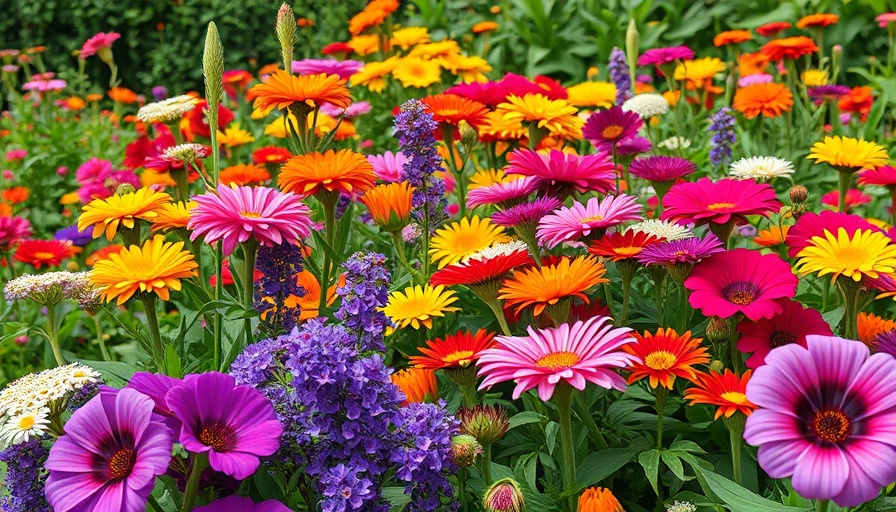
Discover the Oudolf Landscape: A Gateway to Natural Gardening
The newly unveiled Piet Oudolf borders at RHS Wisley represent more than just a visual feast for garden enthusiasts; they embody an accessible approach to naturalistic gardening that bridges the gap between professional landscaping and everyday home gardening. With its strategic use of block and matrix planting, this landscape guides visitors through a transformative experience that can be replicated in gardens of various sizes.
Lesson 1: Embracing Naturalistic Planting
At its core, naturalistic planting draws inspiration from nature itself. As defined by horticultural legends Noel Kingsbury and Piet Oudolf, it combines plants that thrive in local ecosystems and arranges them in a way that mimics their occurrences in the wild. This type of design means selecting flora that share conditions—ensuring a low-maintenance approach fit for busy homeowners. The elegance of the Oudolf Landscape lies in its adherence to this philosophy, making it a reference point for gardeners looking to embrace sustainability while achieving aesthetic appeal.
Lesson 2: The Benefits of Low Maintenance
One of the most appealing aspects of naturalistic planting is its low maintenance requirements. By choosing plants that naturally thrive in your local soil and climate, you limit the need for excessive weeding, pruning, or fertilizing. This is a particularly important consideration for homeowners who may not have the time to dedicate to intensive gardening. The Oudolf borders at RHS Wisley demonstrate this principle effectively; even in their first year, the borders look stunning and have required minimal upkeep, allowing garden-lovers to enjoy their beauty without laborious care routines.
Lesson 3: Designing for Biodiversity
The architectural design of the Oudolf Landscape is not merely ornamental; it has profound implications for biodiversity. The thoughtful selection of indigenous plants helps create habitats for local wildlife, thus elevating the garden’s ecological status. Home gardeners can replicate this strategy by choosing plants that attract pollinators and provide food and shelter for native species. This approach enriches the garden's ecosystem, making it a haven for both flora and fauna.
Lesson 4: Visual Cohesion through Strategic Planting
Piet Oudolf’s technique blends aesthetics with ecology, establishing a unique visual narrative within the garden shapes and colors. The use of plant combinations that flow well together visually not only enhances the garden's beauty but also reflects the natural composition of plant communities found in the wild. Gardeners can apply this principle by creating zones within their own spaces—selecting groups of plants that echo the colors, forms, and growing patterns observed in nature. This strategic blending promotes a sense of harmony that can make even the smallest of gardens appear larger and more inviting.
Lesson 5: How to Get Started with Naturalistic Planting
Gardeners looking to adopt this style can start by visiting gardens that showcase naturalistic planting, such as RHS Wisley or exploring local parks that feature native plants. Observing nature directly allows for a deeper understanding of how plants naturally grow and coexist. Furthermore, combining knowledge gained from these sources with personal experimentation can lead to a rewarding gardening journey. Starting with a few well-chosen native plants can kickstart the transformation of a backyard into a vibrant landscape that celebrates local ecosystems.
Wrapping It Up: A Call to Action
Now more than ever, it's time for homeowners to engage with the concept of naturalistic planting as seen in the Oudolf Landscape at RHS Wisley. The blend of beauty, sustainability, and ease of maintenance makes this gardening style a perfect fit for modern lifestyles. Whether you're in a small courtyard or a spacious estate, there are significant benefits woven into this approach. To fully appreciate its evolution, consider visiting RHS Wisley, or explore local gardening workshops to empower your gardening journey into a sustainable future.
 Add Row
Add Row  Add
Add 




 Add Row
Add Row  Add
Add 

Write A Comment